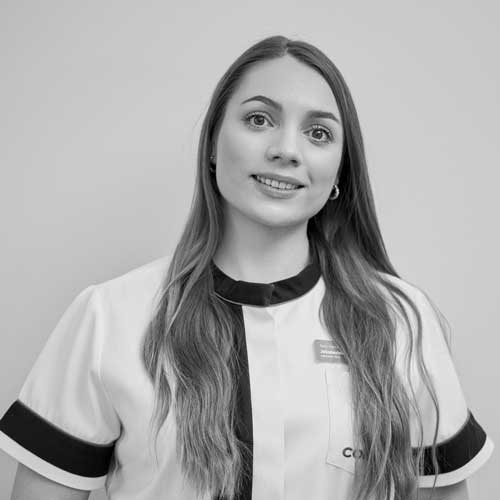- Beauty injections 12
- Beauty packages 1
- Body treatments 7
- Consultations 4
-
Facial treatments 18
-
Rejuvenating 10
- BioRePeel needle-free biorevitalisation
- Brightening light acid peel
- Chemical peeling
- Face and decollete massage
- Mesoestetic Age Element rejuvenating facial treatment with massage
- Microneedling collagen therapy with chemical peeling
- OxyGeneo injection-free rejuvenation
- Physiodermie anti-ageing facial treatment
- Physiodermie Express Brightening Treatment
- RF lifting
-
Rejuvenating 10
- Hair treatments 1
- Intimate area treatments 3
- Laser epilation 4
-
Laser procedures 12
- Birthmark and other skin lesions removal with a laser
- Carbon peeling with laser
- Fractional laser resurfacing
- Healing wounds with laser therapy
- IPL acne treatment
- IPL photorejuvenation
- IPL pigment spot removal
- Laser removal of warts and corns
- Photo-fractional laser rejuvenation
- Removal of capillaries and redness
- Scar removal with laser
- Vaginal laser therapy
- Tattoo and permanent make-up removal 1
IPL pigment spot removal
Look for appointment timesPigment spots are malformations of melanocyte cells, which appear as brown or greyish patches on the skin. They are most common on areas that are often exposed to sunlight – the forehead, cheeks, chin and upper lip, but also on other body parts such as the neck, arms and shoulders. UVA and UVB rays are the number one cause of pigment spots. Hormonal changes are another cause of pigmentation. It can also be influenced by genetic predispositions. Pigment spots can appear on anyone, regardless of skin type.
How to remove pigment spots?
One of the most effective treatment options for removing pigment sports is targeting pigmentation with intense pulsed light (IPL). The photolaser’s rays specifically affect melanin in pigment cells without damaging the skin around it. The rays cause an immediate, very short-term heating of the pigment inside the cells, which selectively destroys it and lightens the skin. In case of complex pigmentation problems, several treatment methods can be combined to achieve the best results.
The duration of the pigment spot removal procedure (usually 2-10 minutes) depends on the specific features, colour, age, location and amount of pigmentation, the age and gender of the patient and the specific treatment method. The procedure does not cause any scars or scar tissue. Patients are sometimes satisfied with the outcome after just one treatment session, but the procedure is usually repeated at an interval of one or two months.
We recommend that you consult a laser treatment specialist before the procedure to assess the suitability of the procedure and the possibility of combining procedures, and to avoid any possible risks and complications. During the consultation, a specialist will thoroughly assess the condition of the skin, the extent and depth of pigmentation and other important parameters that influence the prognosis of the procedure. They will also tell you all about the procedure and give instructions for proper aftercare at home.
- Oncological diseases, epilepsy, melasma, keloid scars, active inflammations and herpes
- Tanned skin – avoid sunbathing for at least three to four weeks before the treatment, including going to the solarium
- The treatment is not carried out during an antibiotic course, and three to four weeks must have passed since the last time you took the medication
- Pregnancy and breastfeeding
- Tattoos in the treatment area
- The treatment is not performed on persons under the age of 18 without the consent of a parent or guardian
Almost all of the above contraindications are relative and the final decision on the treatment will be made by the specialist during the personal examination and consultation before the treatment.
- Avoid tanning for at least 2-4 weeks before and after the treatment, including visiting the solarium (risk of pigmentation). Use SPF 50 sun cream for at least two weeks; to extend the result, SPF sunscreen is recommended all year round.
- Avoid the use of self-tanning products 2-4 weeks before and after the treatment.
- Stop using products containing retinol or similar active ingredients 3 days before the treatment. Once the skin has recovered from the treatment, you can resume using them.
- At least 6 months should have passed since taking medicines containing isotretinoin.
- Inform the specialist about the medicines you are taking before coming for the treatment.
- Alcohol should not be consumed for at least one day before and after the treatment.
- Avoid intensive workouts for 2-7 days after the treatment, depending on skin sensitivity.
- Avoid saunas and hot baths for at least 2 weeks after the treatment.
- Leave a gap of at least 2 weeks before other facial treatments.
- Make-up can usually be applied immediately after the treatment if necessary, but if possible avoid using makeup on the day of the procedure.
- Mild redness, flushing and swelling may temporary occur for about 1-3 days after the treatment. In rare cases, bruising may occur. A cold compress can be applied to reduce the feeling of flushing and to soothe and restore the skin; use a skin repair cream (e.g. Bepanthen, Panthenol, Mesoestetic Post Procedure Fast Skin Repair cream, Mesoestetic Melan Recovery cream) until the skin has recovered.
- After the procedure, the pigment usually darkens and pigment crusts may form on the skin. They will disappear naturally in about 1 week, avoid removing them yourself.
- How many treatment sessions are needed for pigment spot removal?
One to four on average, depending on the individual characteristics of the patient and the pigment spots.
- Does the procedure hurt?
Pigment spot removal causes a slight tingling sensation and is generally easy to tolerate.
- Why should you do pigment spot removal at Confido Clinic?
At our clinic, procedures are performed only by licensed medical professionals using powerful, world-class equipment. This is why we can provide patients with the best and safest possible outcomes with minimal discomfort.
Locations
Price
Pigment removal consultation
Removal of single pigment spots (smaller than 1 cm)
Removal of single pigment spots (larger than 1 cm)
Removal of pigment on the forehead or cheek
Removal of pigment on the cheeks
Removal of pigment on the face
Removal of pigment on the hands
Removal of pigment on the neck
Removal of pigment on the décolleté
Removal of pigment on the neck and décolleté
We have several payment options. Read more HERE.
BOOKING
IPL pigment spot removal




